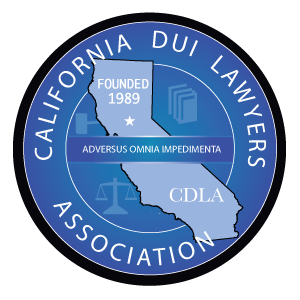California’s penal code is the yardstick used in the application of the state’s criminal law. The penal code follows the constitution of the United States, albeit with a number of slight variations. The discrepancies that exist between California’s penal code and the U.S constitutions are procedural and substantive.
Penal codes in California generally define crimes as public offenses, or acts that are in violation of the law. These offenses are punishable upon conviction by fines, imprisonment, removal from office, or even the death penalty. Whereas most of California’s criminal laws and accompanying sanctions bear similarities to those of other states, slight differences exist. For instance, possession of Marijuana in California is considered a minor offense that only attracts a modest fine. This isn’t necessarily the case in other states.
California’s penal code is based on the state’s criminal justice system and in theory, reflects what is good for the society. Actions that are deemed to be detrimental to the peaceful coexistence of society members are labeled as crimes. Consequently, the state’s penal code stipulates that such actions ought to be prosecuted under California’s criminal law.
Do Penal Codes Label Crimes?
Penal codes not only describe criminal activities, but also label various crimes. For instance, California’s criminal law (Penal Code 459 PC) defines burglary as “entering premises with the intent to commit a felony once inside.” Depending on how severe the burglary circumstance will be and the criminal record of the accused, such a crime can either be adjudged to be a felony or a misdemeanor.
Penal codes also explain the punitive measures that various crimes attract. If an individual is for instance charged with misdemeanor burglary in California, imprisonment shouldn’t exceed 1 year in a county jail. If the same person is convicted for felony burglary, he/she can face up to six years in a state prison. Generally, fines, imprisonment, probation, and community services are some of the commonest penalties for violating California’s penal codes.
Organization of California’s Penal Code
California’s Penal Code was enacted by the state’s legislature in 1872. It borrows heavily from New York’s penal code. The California Penal Code is divided into 6 parts, which contain “Titles” that are in turn subdivided into “Chapters” containing “Sections.” Unlike it is the vase with sections of the U.S. Code, each particular provision of the California Penal Code is typically referenced using only its section number.
Part One of the California Penal Code contains 17 titles. It is preliminary and therefore, only provides definitions of pertinent legal terminologies rather than definitions of crimes and various punishments. The subsequent batch of titles is concerned with crimes against the state such as treason. Title 7 is concerned with the state’s court system, and crimes that are committed therein including perjury.
The 8thTitle of California’s Penal Code covers violent crimes while Title 9 is concerned with offenses against decency and public morals. Title 10 runs from Sections 369 to 402, and covers offenses against public health and safety. Title 11 covers sections 403 to 423, and is concerned with crimes against public peace while Title 12 covers offenses against public revenue.
Title 13 of the California Penal Code covers Section 441 to 593. It covers crimes against property. Title 14 is titled “Malicious Mischief” and includes offenses such as trespassing. Miscellaneous Crimes are captured in Title 15 of the penal code, which contains sections 625 to 653. Title 16 is referred to as “General Provisions while Title 17, which is the last title in Part 1 of the Penal Code, outlines the rights of witnesses and victims of crimes.
Part 2 of California’s Penal Code covers sections 681 to 1020. It delineates the California criminal procedure system. On the other hand, Part 3 contains Sections 2000 to 10,007. It codifies statutes that govern California’s corrections system. It is this part of the penal code that highlights provisions that govern the operation of state prisons as well as county jails. Part 3 of California’s Penal Code is similarly concerned with the death penalty and its administration.
Part 4 of the California Penal Code contains sections 11,006 to 14,315. It concerns itself with statutes that govern criminal investigations, police officer training, prison officer training, crime prevention and control, and gun control. Part 5 of the California Penal Code is made up of only two sections, which authorize the California Peace Officers Memorial Foundation to set up and maintain a memorial for law enforcement officers within the grounds of the State Capitol using private funds.
Part 6 of the Penal Code contains statutes that prescribe the management of weapons. In as much as drug laws in California are not captured in the State’s Penal Code, they are contained in the California Health and Safety Code, which is a separate enactment. Likewise, provisions that affect motor vehicles, motorists, and traffic matters are captured in the California Vehicle Code.
Definition of Crimes in California
Generally, crimes are defined by written statutes at federal, state, and local government levels. The California penal code outlines what conduct is considered a crime. In addition, the intent and actions that are requisite to the commitment of criminal acts and the recommended punitive measures are also included within the penal code. According to California’s penal code, there are 3 different types of public offenses and crimes. These are infractions, felonies, and misdemeanors.
- i) Infractions
Infractions are generally public offenses which nonetheless, aren’t considered a crime. Therefore, these offenses aren’t punishable by imprisonment. Individuals who are convicted of infractions typically get punished by fines, removal and (or) disqualification from public office, and community service. Offenses that are considered to be infractions in California include traffic violations such as exceeding speed limits.
Individuals who get charged with infractions don’t have a similar right to trial via juries as it is the case with misdemeanor defendants. In addition, the accused persons don’t have the right to court-appointed counsels. Infraction trials can also be heard by non-judges including magistrates.
- ii) Misdemeanors
These crimes are punishable by imprisonment in a detention facility, city jail or county jail for a period that doesn’t exceed one year. Except in instances when the law stipulated a different punishment, misdemeanors are only punishable by imprisonment in county jails for a period not exceeding 6 months or a fine that doesn’t exceed one thousand dollars.
iii) Felonies
These are more serious crimes and therefore, can be punished by imprisonment in state prisons or death. Persons convicted of felonies can alternatively be granted probation rather than a prison sentence. In case an individual is granted probation, the court may impose conditions such as restitution to his/her victims for actual losses.
The Criminal Process in California
The California Penal Code stipulates how different crimes ought to be handled. Generally, crimes can either be handled in the jurisdiction within which they were committed or in the jurisdiction or community that was most affected by that particular criminal activity. The criminal process in California comprises the initial investigation, arrests, criminal charge, prosecution, and sentencing in case the alleged offender is convicted.
The chain of events that constitute the criminal process in California is an indicator that law enforcement personnel, court prosecutors, probation officers, judges and magistrates, criminal defense attorneys, and corrections officers all play a role as far as within the criminal justice system. The Penal Code also stipulates that if you are arrested and charged with a crime, you still have certain rights meant to not only protect you but also ensure that you undergo fair treatment.
According to the Penal Code, the outcome of whichever crime that comes before a California court is determined by various factors. These include the type of crime, amount and quality of evidence submitted before the court, whether the proper protocol was adhered to by law enforcement agencies during the arrest and subsequent investigations, and the work of the prosecution and defense teams.
California Penal Code and Criminal Courts
In any criminal offense that is likely to attract a potential jail sentence, defendants have the right to representation by an attorney even when they cannot afford one. If an infraction has been committed, defendants have the right to attorney more so if they have been arrested and not released after depositing the required bail.
Generally, it is the state is represented by the District Attorney’s office in a criminal court. In certain cases however, the city attorney can prosecute certain offenses. The California Penal Code stipulates that it is only the state that can charge individuals with a criminal violation. You cannot be charged by a private agency or another person. The penal code also outlines that all accused persons are deemed to be innocent until their guilt is proven beyond reasonable doubt.
Criminal Cases vs. Civil Cases
Criminal cases happen when the state files cases in court in court with the objective of punishing someone who committed an offense. If the accused is found guilty of committing the crime, he or she will be convicted and sentenced or fined in accordance with the Penal Code. On the other hand, civil cases happen when one person or organization sues another individual or business due to a dispute between them. More often than less, civil cases arise from failure to honor contracts and similar monetary disputes.
In criminal cases, the government needs to prove that the accused is guilty beyond reasonable doubt. In civil cases, complainants are required to prove their case through the so-called preponderance of the evidence. To put this into perspective, parties involved in civil cases can win by simply convincing the jury or judge that their side of the case carries more weight.
In criminal cases where the matter is either a felony or misdemeanor, the court can appoint a lawyer without cost for the defendant if he/she cannot afford one. In civil cases, parties involved are allowed to represent themselves if they cannot afford a lawyer. In infraction cases, defenders don’t have the right to a court-appointed attorney. In criminal cases, the accused always have the right to be tried by a jury.
The California Penal Code and Criminal Cases
Part 1 of the California Penal Code outlines the procedures that ought to be followed as far as the arrest, prosecution, conviction, and sentencing of law offenders is concerned. When law enforcement officers arrest the defendant, three things might happen.
- The defendant might be released if the city attorney or district attorney’s office decides not to press charges; or
- The defendant can post bail, or may be released based on the promise that he/she will appear in court during arraignment; or
- The defendant can be held in jail pending his/her presentation before a court for arraignment.
Upon arrest, the police often write a report summarizing the events that led up to the arrest. This report ought to contain witness names and any other information that the prosecutor might need. Defendants don’t have the right to go through the arrest report for the safety of witnesses. However, a copy of this report ought to be given to the defendants’ lawyers.
Depending on the seriousness of the case, the prosecutor will decide whether or not to file charges, and if the crime was a felony or misdemeanor. Since the California Penal Code grants defendants the right to speedy trials, the district or city attorney’s office is generally required to file charges within forty-eight hours of an arrest. Weekends, mandatory court closure days, and court holidays do not count against this timeframe.
During the arraignment, judges are required to tell defendants what their charges are besides informing them about their constitutional rights. Defendants are supposed to respond to charges by simply entering a plea. Typical pleas include no contest, guilty, and not guilty.
If defendants are still in custody during their arraignment, judges are allowed to release them at their own recognizance. This happens when the defendant promises to re-appear in court at a later date. Judges can also set bail and consequently send defendants back in jail until bail is posted, or they can even refuse to set bail altogether and send the defendants back to jail until the case is concluded.
If defendants plead not guilty in a misdemeanor case after arraignment and before trial begins, the defense and prosecution often exchange information. The process is known as the “discovery” and is meant to establish if the matter can be resolved by lawyers from both sides and the judge without going to trial. During the discovery, defendants can change their plea to either guilty or no contest.
In felony cases, judges typically hold preliminary hearing if the matter doesn’t get settled or dismissed during the arraignment. In the preliminary hearing, the judge will decide whether or not there is sufficient evidence that the accused committed a crime to warrant his/her trial. If a judge decides that there is sufficient evidence, the prosecutor will file a document known as “the Information” which paves way for the subsequent arraignment of the accused.
Expunging Your Criminal Record
You can have your criminal record cleared once you have met all the conditions that were meted out during your sentencing. Needless to say, a criminal record limits your chances of getting your dream job, or even attending some graduate schools. Most felonies and misdemeanors can be cleared from government records once a specified period elapses. Even though you can seek to have your record cleared without the help of an expungement lawyer, it is always advisable to hire one.
An expungement attorney will help you figure out if your record is eligible for dismissal. A lawyer will also help you find out details of your past conviction. Once you have a copy of information pertaining to your criminal record, an expungement lawyer will be at hand to help you file a petition at a court house. If your petition is granted, your past offenses will be immediately cleared from government records.
Do you have a criminal record that you want expunged yet you do not understand how the California penal Code applies to your situation? To the best legal advice and representation, contact Record Expungement Attorney through 805-836-0422. You can also visit the practice’s offices on 30700 Russell Ranch Road, Suite 250, Westlake Village, California.








